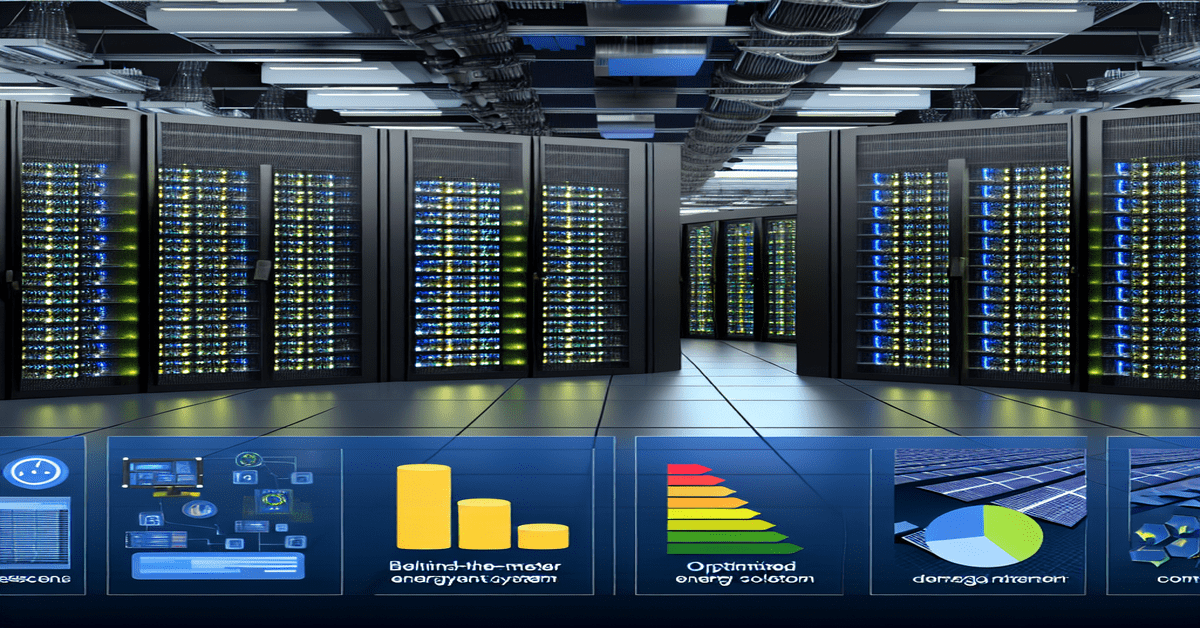Navigating the Post-AI Energy Crunch: Data Centers Innovate to Meet Skyrocketing Demand
The world of data centers is facing an unprecedented challenge as the rapid rise of artificial intelligence (AI) workloads pushes energy demands to new heights. With the scaling of AI, particularly large language models (LLMs) and machine learning applications, data centers are consuming electricity at an alarming rate, putting immense pressure on power grids and causing delays in power provisioning for new data center projects. This “post-AI energy crunch” is forcing data center operators to innovate aggressively to mitigate energy constraints and sustain the growth of AI.
The Power Struggle: Delays and Disruptions
As AI workloads continue to surge, data centers find themselves at the forefront of an energy crisis. Traditional power infrastructure simply cannot keep pace with the rapid, large-scale deployments of AI. Delays in acquiring reliable, high-capacity power supplies have become increasingly common, impacting data center expansion and operations. This power struggle is not only hindering the growth of AI but also highlighting the urgent need for innovation in energy management and infrastructure.
Recent research has shed light on the correlation between these power delays and the adoption of various innovation strategies by data center operators. As they navigate the post-AI energy landscape, data centers are turning to cutting-edge solutions to optimize their energy consumption and mitigate the impact of power constraints.
Innovative Strategies: AI-Driven Energy Management and Beyond
To combat the energy crunch, data center operators are embracing a range of innovative strategies. One key approach is the deployment of AI-driven energy management systems. By leveraging the power of AI, these systems can intelligently monitor, analyze, and optimize energy consumption within data centers. Through real-time data analysis and predictive modeling, AI can help data centers make informed decisions about workload placement, cooling optimization, and power distribution, leading to significant improvements in energy efficiency.
In addition to AI-driven energy management, data centers are also exploring behind-the-meter energy solutions. These solutions involve generating or storing energy on-site, reducing reliance on the grid and providing a more resilient and sustainable power supply. By incorporating renewable energy sources, such as solar panels or wind turbines, data centers can offset their energy consumption and minimize their carbon footprint.
Optimizing cooling systems is another crucial strategy in the fight against the energy crunch. AI-powered cooling optimization allows data centers to dynamically adjust cooling parameters based on real-time conditions, ensuring optimal temperature and humidity levels while minimizing energy waste. By intelligently coordinating workloads and leveraging advanced cooling technologies, data centers can significantly reduce their cooling costs and improve overall efficiency.
Moreover, data centers are increasingly adopting demand flexibility and response platforms to better manage their energy consumption. These platforms enable data centers to participate in demand response programs, where they can adjust their energy usage in response to grid signals or incentives. By strategically shifting workloads to off-peak hours or temporarily reducing power consumption during peak periods, data centers can alleviate strain on the power grid and reduce their energy costs.
Tech Giants Leading the Charge
Leading tech giants, such as Google, Microsoft, Amazon, and Meta, are at the forefront of reshaping energy consumption in the post-AI era. These companies are investing heavily in AI-powered grid management and sustainable energy integration to optimize their data center operations. By leveraging AI algorithms to predict energy demand, optimize power distribution, and integrate renewable energy sources, these tech giants are setting a new standard for energy efficiency in the industry.
The efforts of these industry leaders signal a significant shift in the relationship between AI and energy consumption. AI is no longer just a driver of data center demand; it is also becoming a key enabler of power grid efficiency and sustainability. As more data centers follow suit and adopt AI-driven energy solutions, the industry as a whole can move towards a more sustainable and resilient future.
The Environmental Impact and the Path Forward
The rise of AI workloads has not only strained power grids but also raised concerns about the environmental impact of data centers. Training large AI models consumes an enormous amount of power and generates significant carbon emissions. To put this into perspective, training a single model like ChatGPT-3 can emit the equivalent of the annual emissions of 130 typical U.S. homes.
As the demand for AI continues to grow, it is crucial for data centers to prioritize sustainability and minimize their environmental footprint. This requires a multi-faceted approach that combines innovative energy solutions, infrastructure modernization, and a commitment to renewable energy sources.
Data centers must invest in advanced energy management technologies, such as AI-driven optimization and demand response platforms, to maximize energy efficiency and reduce waste. They should also explore on-site renewable energy generation and storage solutions to decrease reliance on fossil fuels and support the transition to a low-carbon economy.
Furthermore, collaboration between data center operators, energy providers, and policymakers is essential to address the energy challenges posed by AI. By working together to develop sustainable energy policies, incentivize renewable energy adoption, and modernize power grids, the industry can create a more resilient and sustainable energy landscape that supports the growth of AI while minimizing its environmental impact.
Embracing the Future: Navigating the Post-AI Energy Landscape
The post-AI energy crunch presents both challenges and opportunities for the data center industry. As AI workloads continue to push the boundaries of energy consumption, data center operators must embrace innovation and adapt to the evolving energy landscape. By leveraging AI-driven energy management, adopting sustainable energy solutions, and collaborating with industry stakeholders, data centers can navigate the energy challenges and emerge as leaders in the post-AI era.
The path forward requires a proactive and holistic approach to energy management. Data centers must prioritize energy efficiency, sustainability, and resilience in their operations. They must invest in advanced technologies, such as AI-powered optimization and demand response platforms, to optimize energy consumption and reduce costs. Additionally, they should explore renewable energy integration and on-site generation to minimize their environmental impact and support the transition to a low-carbon future.
As the industry navigates the post-AI energy crunch, it is crucial to recognize the role of AI not only as a driver of energy demand but also as a powerful tool for optimizing energy consumption and enabling a more sustainable future. By harnessing the power of AI to manage energy efficiently and integrating sustainable energy solutions, data centers can meet the growing demands of AI while minimizing their environmental footprint.
The post-AI energy crunch is a wake-up call for the data center industry to prioritize energy innovation and sustainability. By embracing the challenge and leveraging the power of AI, data centers can navigate the energy landscape, drive the growth of AI, and contribute to a more sustainable and resilient future.
#PostAIEnergyCrunch #DataCenterInnovation #SustainableAI
-> Original article and inspiration provided by ReviewAgent.aiMatt Vincent,DCF Staff
-> Connect with one of our AI Strategists today at ReviewAgent.ai


